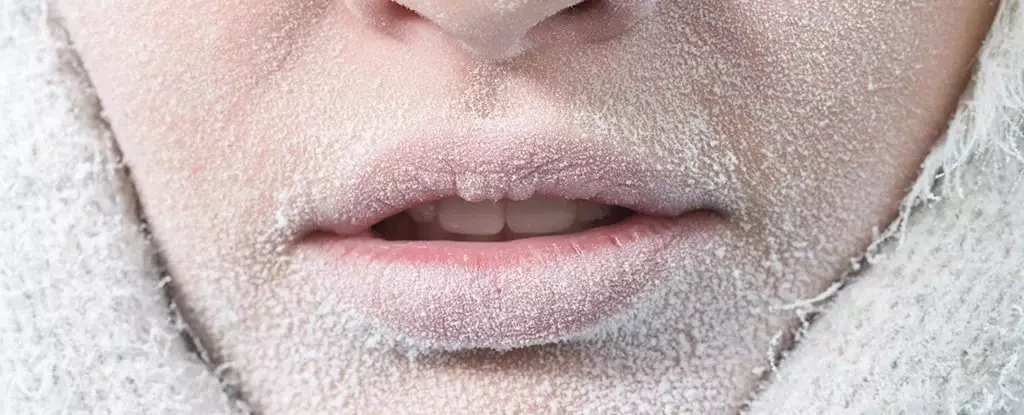In the early hours of a freezing New Year’s Eve morning in Minnesota in 1980, Wally Nelson made a shocking discovery. He found the lifeless body of his 19-year-old friend, Jean Hilliard, lying in the snow just a few meters from his door. Jean’s car had stalled as she was returning home after a night out. Clad in inadequate winter clothing, she braved the bitter temperatures in search of help. Unfortunately, she tripped and lost consciousness. For six hours, Jean’s body lay motionless in the subzero cold, causing her body temperature to plummet to an astonishingly low level. However, against all odds, Jean managed to survive the ordeal, leaving medical professionals astonished and the community astounded.
The Unusual Phenomenon of Hypothermic Survival
Stories like Jean Hilliard’s capture our attention because they go against our expectations. Hypothermia is often associated with death, but in some cases, individuals manage to defy the odds and survive freezing temperatures. Medical specialists in cold climates even have a saying: “Nobody is dead until warm and dead.” The understanding that extreme hypothermia does not necessarily result in fatality has become the foundation of a unique therapeutic approach. By deliberately lowering body temperature under controlled conditions, doctors can slow down the metabolism and reduce the body’s need for oxygen. In specific medical settings or rare circumstances, this technique buys valuable time to stabilize a patient’s condition and potentially save their life.
The Unprecedented State of Jean Hilliard’s Hypothermia
Although stories of survival in freezing conditions are not unheard of, Jean Hilliard’s case stands out due to the extreme nature of her hypothermia. Her body temperature had dropped to a chilling 27 degrees Celsius, a full 10 degrees below the temperature of a healthy human. Reports described her as being “frozen solid,” with pale and ashen skin and seemingly impenetrable by a hypodermic needle. The physician who treated her remarked that her body felt “just like a piece of meat out of a deep freeze.” Despite these alarming physical indications, within a few hours of being warmed by heating pads, Jean’s body miraculously returned to a state of health.
Exploring the Biological Phenomenon
The question arises: how did Jean Hilliard survive being essentially frozen? While it is challenging to ascertain the precise reasons for her survival, understanding the properties of water provides some insights. Unlike many substances, water expands when it freezes. This expansion can have severe consequences for body tissues caught in subzero temperatures, as it can cause cells to rupture and lead to irreversible damage. However, various animals have evolved unique adaptations to cope with the dangers of freezing conditions. For example, Antarctic blackfin icefish produce glycoproteins that act as natural antifreeze, preventing the formation of ice crystals. Wood frogs flood their cells with glucose, transforming the cell contents into a syrup-like substance that resists freezing and dehydration. Outside the cells, water freezes, encasing the tissues in ice. It is plausible that Jean Hilliard possessed extraordinary biological mechanisms that enabled her body to withstand freezing conditions.
While it is astonishing that Jean’s body endured extreme hypothermia, it is crucial to clarify what “frozen” means in this context. Despite her body feeling solid, her core temperature was still above freezing. The rigidity of her muscles, resembling rigor mortis, is a typical sign of severe hypothermia. The surface of her body being cold and white, along with the glassy appearance of her eyes, is also expected in such conditions. When the body enters a state of extreme cold, blood vessels under the skin constrict, redirecting blood flow to the vital organs and giving the skin an ashen appearance. Medical professionals attempting to administer medication via hypodermic needles may have encountered difficulties due to narrow veins and dehydrated skin. However, without substantial data and observations, it remains speculative whether Jean’s frozen body was typical or a remarkable anomaly.
There is no denying that Jean Hilliard’s survival was incredibly fortunate. However, as our knowledge of the human body expands, reliance on chance becomes less necessary to save lives in similar situations. Advances in medicine, coupled with swift responses in emergencies, hold the potential to revolutionize the treatment of extreme hypothermia cases. Jean Hilliard’s incredible story serves as a reminder of the remarkable capabilities of the human body, inspiring further research and exploration into unlocking the secrets of nature’s resilience.


Leave a Reply